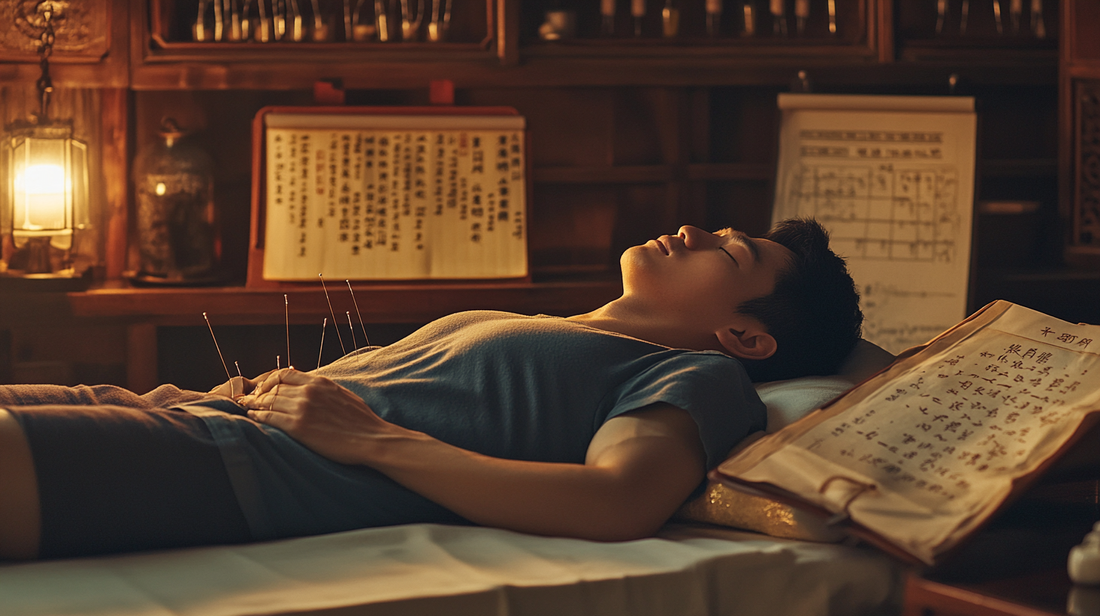
Treating Sciatica with Acupuncture: A TCM Case Study
Share
Introduction
Sciatica is a painful condition that affects the lower back, hips, and legs—often caused by irritation or compression of the sciatic nerve. It can lead to radiating pain, numbness, or weakness that interferes with daily life. While conventional treatments include painkillers, physical therapy, and in some cases, surgery, many patients are now turning to Traditional Chinese Medicine (TCM)—especially acupuncture—for lasting, drug-free relief.
This blog takes a deep dive into how acupuncture works to treat sciatica, explores the TCM understanding of the condition, and presents a real-life case study from a Vital Duo clinic. We'll also review clinical evidence and explain how a TCM approach offers personalised, root-focused healing.
What Is Sciatica?
Western Medical Perspective
Sciatica refers to pain that follows the path of the sciatic nerve—from the lower spine down the buttock and leg. Common causes include:
- Herniated or slipped disc
- Spinal stenosis
- Piriformis syndrome
- Pelvic injury or misalignment
Symptoms include:
- Sharp or burning pain in the buttock or leg
- Numbness or tingling
- Weakness in the affected leg
- Pain that worsens with sitting, coughing, or sneezing
Limitations of Conventional Treatments
- Medications may only mask symptoms
- Steroid injections have temporary effects
- Surgery carries risks and recovery time
That’s why many patients explore acupuncture—to treat the root without side effects.
How TCM Understands Sciatica
Qi and Blood Stagnation
In TCM, pain is caused by the obstruction of Qi and blood in the meridians. Sciatica is often associated with:
- Cold-Damp Invasion: Pain that worsens with weather, heavy limbs
- Qi Stagnation: Stress-related pain, tight hips
- Blood Stasis: Sharp, fixed pain, worse at night
- Kidney Deficiency: Weak lower back, fatigue, chronic pain
Affected Meridians
- Bladder Meridian (Taiyang): Runs from the head down the back and legs
- Gallbladder Meridian (Shaoyang): Lateral body and hips
Disruption in these channels can trigger sciatica-like pain patterns.
"Sciatica in TCM is often a multi-layered condition involving cold, damp, and deficiency, not just nerve impingement." — Journal of Chinese Medicine, 2020
A Real TCM Case Study from Vital Duo
Patient Profile
- Name: Not disclosed (female, 43)
- Symptoms: Burning pain down left buttock and thigh, tingling, worsened by sitting and stress
- Duration: 6 months
- History: Desk job, sedentary lifestyle, mild scoliosis, irregular periods
TCM Diagnosis
- Pattern: Liver Qi stagnation with cold-damp accumulation and Kidney deficiency
- Pulse: Wiry, deep, slightly weak in the Kidney position
- Tongue: Pale with a greasy white coating
Treatment Plan
1. Acupuncture Points (selected over multiple sessions):
- BL23, BL25, BL40 – Strengthen lower back, move stagnation
- GB30, GB34 – Address lateral leg pain and sciatica path
- LV3, LI4 – Move Liver Qi
- KI3, SP6 – Support Kidney and nourish Yin
2. Herbal Prescription:
- Du Huo Ji Sheng Tang: for wind-damp-cold and lower back weakness
- Modified to include Yan Hu Suo (pain relief), Chuan Niu Xi (guiding herbs to the legs)
3. Lifestyle Advice:
- Daily stretching (hip openers, walking)
- Warm meals, avoid cold/raw foods
- Reduce prolonged sitting; use heat packs
Results (over 3 weeks):
- Week 1: Tingling reduced by 40%
- Week 2: Pain less frequent, no longer sharp
- Week 3: 90% symptom relief, better mood and sleep
How Acupuncture Relieves Sciatica
1. Opens Meridians and Moves Qi
- Needling specific points clears blockages
- Promotes blood flow to the affected area
2. Reduces Inflammation
- Studies show acupuncture downregulates pro-inflammatory markers (IL-6, TNF-alpha)
3. Releases Natural Analgesics
- Triggers endorphins, serotonin, and dopamine
4. Modulates Nerve Activity
- Alters pain signals in the central nervous system
- Improves nerve conductivity and circulation
Harvard Osher Center (2021): "Acupuncture significantly reduced nerve-related pain and improved mobility in chronic sciatica patients."
Supporting Research
- Cochrane Review (2020): Acupuncture showed moderate to high effectiveness in reducing sciatica pain vs. conventional care
- British Medical Journal (BMJ, 2018): Acupuncture improved function and pain severity in chronic lumbar radiculopathy
- Journal of Pain Research (2021): Acupuncture reduced inflammatory markers and improved quality of life in sciatica patients
When to Consider Acupuncture for Sciatica
- Symptoms last longer than 4 weeks
- Medication brings limited or temporary relief
- You want a non-invasive, drug-free approach
- Pain affects your sleep, mood, or mobility
A licensed TCM practitioner can diagnose your pattern and design a treatment plan tailored to your body—not just your symptoms.
Safety and What to Expect
- Treatments are generally safe when performed by certified acupuncturists
- Sessions last 45–60 minutes
- Mild soreness or fatigue after needling is common
- Best results occur over multiple sessions
"Patients who commit to consistent care see long-term improvements, often beyond just pain relief." — British Acupuncture Council
Final Thoughts
Sciatica doesn’t have to control your life. Acupuncture offers a safe, effective, and holistic path to recovery by addressing not just where it hurts, but why. TCM approaches pain with a broader lens—seeing how stress, lifestyle, and internal imbalances shape your experience.
Academic References
- Cochrane Library. (2020). Acupuncture for Sciatica: Systematic Review
- Journal of Pain Research. (2021). Biological Effects of Acupuncture on Sciatic Nerve Pain
- British Medical Journal. (2018). Acupuncture for Chronic Radiculopathy
- Harvard Osher Center for Integrative Medicine. (2021). Neurological Impact of Acupuncture in Sciatica
- Journal of Chinese Medicine. (2020). Meridian Theory and Lumbosacral Pain
